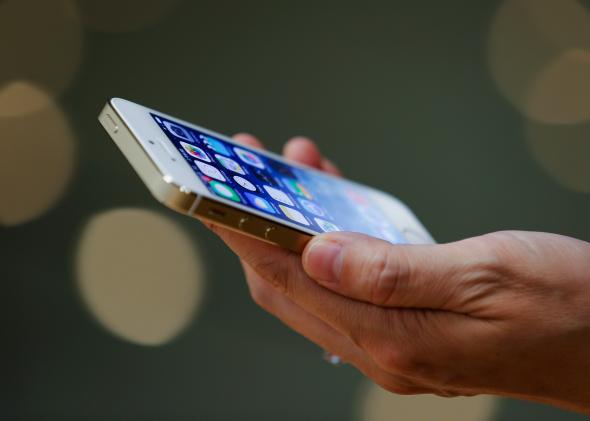See more coverage here of the end of the Supreme Court’s term from Slate’s annual Breakfast Table.
Welcome, Fourth Amendment, to the 21st century. In a unanimous opinion by Chief Justice John Roberts, the Supreme Court held Wednesday that police need a warrant to search a cellphone found on a person they arrest. And in fact, the justices did more than that. They also sent a clear signal that—after years of ducking and dodging—they’re ready to update privacy protections to reflect the realities of the digital age.
The Fourth Amendment prohibits “unreasonable searches and seizures” of “persons, houses, papers, and effects.” Over the last hundred years the Supreme Court adapted that 18th-century language to new technologies. But it was slow going. For example, it took the court until 1967 to say that people had a constitutional right to privacy in their phone calls.
In Wednesday’s case, Riley v. California, the Roberts court has made clear that it has stepped up the pace. The justices are eager to recognize that cellphones—a term Roberts called “misleading shorthand” for “minicomputers that also happen to have the capacity to be used as a telephone”—are “now such a pervasive and insistent part of daily life that the proverbial visitor from Mars might conclude they were an important feature of human anatomy.”
While the Fourth Amendment generally requires police to get a warrant before executing a search, one of the many exceptions to that requirement is the “search incident to arrest.” If the police arrest you, they don’t need a warrant to search you and anything they find on you. The 1973 case defining this exception involved a search of a pack of cigarettes that turned out to contain heroin.
Riley says, however, that the police do generally need a warrant to search data stored on cellphones. To the government’s argument that such data is “materially indistinguishable” from that pack of cigarettes, Roberts responded incredulously: “That is like saying a ride on horseback is materially indistinguishable from a flight to the moon.” Cellphones, Roberts wrote, “hold for many Americans ‘the privacies of life.’ ” They’ve got everything about us stored on them. So it means something different when the police start poking into their contents.
In previous cases, the justices have gone through all sorts of contortions to avoid adapting existing privacy rules to new and evolving technologies. That could be chalked up to the limits of the justices’ technical knowledge. But as Wednesday’s opinion shows, as Dahlia Lithwick and others have pointed out, the justices have demonstrated they understand enough about data storage and communications technology to grasp the privacy implications.
Some of the justices may still feel that it’s best left to legislatures to make the rules when new capabilities pose new privacy challenges. That was Justice Samuel Alito’s core point in his concurrence in Riley (more on that from Eric Posner and Laurence Tribe) and in the GPS tracking case in 2012. The court’s full-throated assertion Wednesday of protection against cellphone searches without a warrant suggests, however, that most of the justices have come to realize that relying on lawmakers to protect “the privacies of life” is too haphazard and unreliable. The pace of technological development will leave open to government inspection vast swaths of daily life that were never exposed this way before. As Roberts put it, “a cell phone search would typically expose to the government far more than the most exhaustive search of a house.” If Roberts is thinking about his own phone, as Eric Posner and Linda Greenhouse suggest, then so be it. (Though what are the odds of him being arrested?) For whatever reason, the court has broken through its Fourth Amendment confusion when it comes to modern technology.
That makes privacy advocates optimistic about the future. “In Roberts’ opinion, he addresses apps and remote deletion and encryption—all this technologically complicated stuff,” says Hanni Fakhoury, a staff attorney for the Electronic Frontier Foundation, a pro-privacy group that filed a brief on behalf of the defendants in the two Riley cases. “If the court is actually going to grapple with technology, we’re in a much better place.”
Of course, Riley doesn’t mean that every technology-specific ruling about the government’s power to search and seize will turn out as well for privacy interests as Wednesday’s ruling. But in significant cases looming on the horizon—such as challenges to warrantless National Security Agency surveillance and warrantless police tracking via cellphone—the Roberts court looks more likely to focus on the actual effect these interventions (or intrusions) have on privacy. That’s an improvement.
